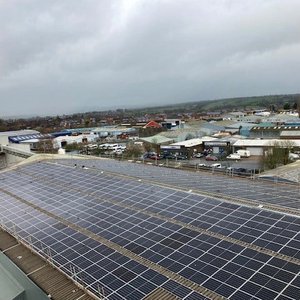The fast growth of the aquaculture industry has increased demand for feed and ingredients. Because of its high nutritional properties fishmeal has long been popular but due to economical and environmental concerns, alternatives are being investigated to ensure sustainability and meet demand. Bonnie Waycott spoke to Dr Julian Gamboa-Delgado, a researcher at Universidad Autonoma de Nuevo Leon in Mexico, to hear more about one such alternative - microbial-derived nutrients.
Microbial-derived nutrients have been drawing attention because some fishmeal alternatives, such as plant meal, may not be entirely suitable for certain aquatic species. The presence of anti-nutritional factors and amino acid restrictions, for example, can also limit the use of plant meal or lead to additional processing and costs.
\"Microbial-derived nutrients refer to the biomass that has been produced under a range of production systems from microalgae, bacteria and yeast, and further processed to yield a specific final product,\" explained Gamboa-Delgado who, together with his colleague Julia Mariana Márquez-Reyes, published a review paper in 2016 on the potential of microbial-derived nutrients in aquaculture nutrition.
\"This product might be represented by bulk microalgal biomass such as paste or dry powder, or specific, isolated high-value products.\"
A related term is Single Cell Protein, or SCP, the processed biomass or extracted protein from cultures of microorganisms that can be used as ingredients for food or animal feed. Known to grow rapidly and produce a high yield, microorganisms have high protein content and can convert various substrates efficiently. They can also be classified according to the types of carbon and energy sources that they use, and have been produced through various energy sources such as solar or artificial light, and different sources of carbon. Some microalgae species have the physiological ability to grow under heterotrophic conditions and are currently cultured in confined bioreactors (e.g. Schizochytrium sp). In addition, the diversity of metabolisms found in bacteria has led to a huge culture using unconventional substrates such as methane and wastes from the food industry.
\"We began this particular research line because, in the past, we evaluated alternative ingredients in shrimp diets using various nutritional techniques, and became interested in evaluating different sources of microbial biomass as fish meal replacements,\" said Gamboa-Delgado.
\"Different microbe species offer nutritional characteristics that are just as good as, or even better than, plant-derived products. Thanks to novel production methods, it\'s also possible to predict high production of single cell proteins, and a concomitant reduction of retail prices.\"
Extracted products from yeast, bacteria and microalgae can elicit important growth and immunostimulatory effects in larvae and juveniles of aquatic organisms. Microalgal proteins, for example, present high digestibility and can be compared to conventional vegetable proteins.
Source: The Fish Site // Original Article










